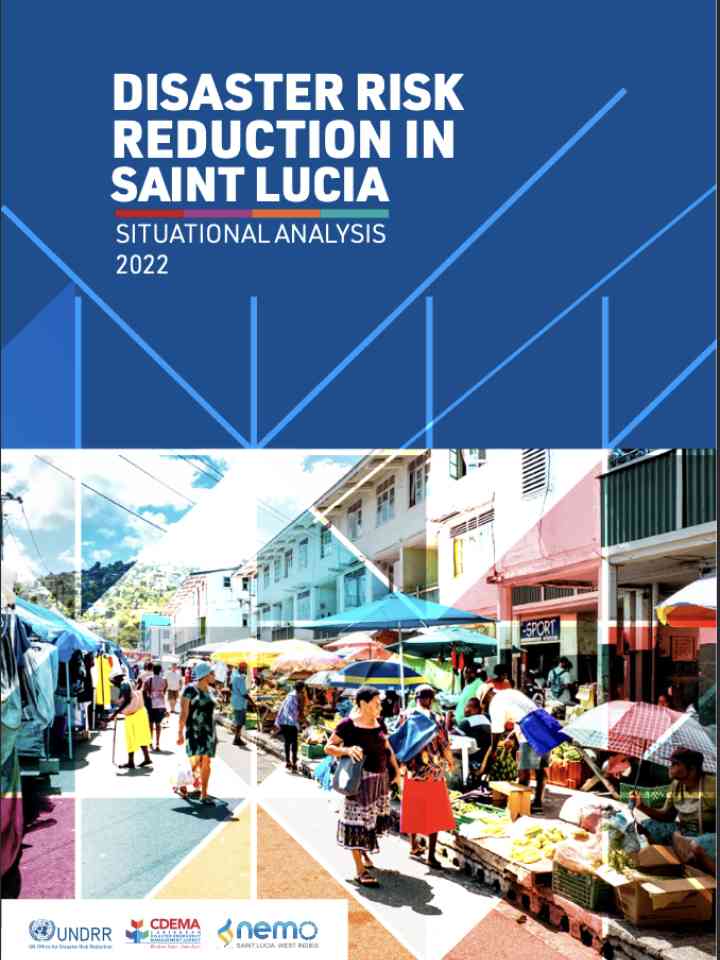Disaster risk reduction in Saint Lucia: Situational analysis 2022
This study supports the implementation of the Country Work Programme for Saint Lucia, as well as the design and revisions of other critical national instruments, including the National Adaptation Plan, Medium and Long-Term (National) Development Strategies, sectoral policies, strategies and plans, and other supporting national instruments for implementation of the 2030 Agenda. To this end, the report consolidates risk information for Saint Lucia, establishing the country's risk profile and analyzing the hazard context, existing vulnerabilities, capacities, and gaps to determine the priority areas for action and interventions in support of systemic risk governance.
The publication presents the following findings:
- Saint Lucia's institutional framework for disaster risk management is symbolic of multi-stakeholder involvement. While the National Emergency Management Organisation is the designated focal point for disaster management activities, the multi- stakeholder, multi-sectoral National Emergency Management Advisory Council and the Hazard Mitigation Council demonstrate the country's commitment to sound institutional arrangements in support of disaster risk reduction.
- While hydrometeorological hazards have been prevalent within the national risk landscape, Saint Lucia is also susceptible to earthquakes, volcano hazards, spills, civil unrest and landslides
- The country should continue to aim for "building back better", and deliberate and enforced activities for mainstreaming disaster risk reduction into development activities
- Saint Lucia faces significant challenges with data collection, analysis and dissemination, with limited availability of disaggregated data. Data unavailability hinders the process of evidence-based policy and action.
